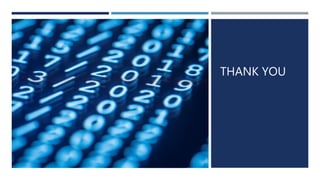Logical programming languages and functional programming languages
- 1. LOGICAL PROGRAMMING LANGUAGES AND FUNCTIONAL PROGRAMMING LANGUAGES By: Nahian Zarif Khan
- 2. LOGICAL PROGRAMMING LANGUAGES All logical programming languages can be generalized into a category of programming languages called declarative languages. Has a few advantages :- Classified as high-level languages as they implement computation’s logic rather than mechanics. They allow data to be represented both extensionally and intentionally. Well suited for rapid interpretation of the data structure and the code to implement very complicated ideas.
- 3. LOGICAL PROGRAMMING LANGUAGES Disadvantages include:- There is no suitable method of representing computational concepts that originate in a built-in mechanism of state variables like it is found in conventional languages. Initially, due to insufficient investment in complimentary technologies, users were poorly served. Poor facilities for supporting arithmetic ,etc. Limited to which types of problems it can solves. Slow program execution.
- 4. FUNCTIONAL PROGRAMMING LANGUAGES Type of programming paradigm in which everything is done with the help of functions and using functions as its building block. Has a few advantages :- Leads to fewer bugs. Easier to test. Reasons: (i)Outputs same for any given inputs (ii) Pure functions don’t depend on any state apart from the inputs Function signatures are more trusted . Concurrency is more easily kept safe , pure functions are definitionally thread-safe. No chances of race condition occurrence. Immutable variables lead to fewer side-effects
- 5. FUNCTIONAL PROGRAMMING LANGUAGES Disadvantages include:- Can be less efficient than others. They tend to require a large amount of time and memory. Purely functional languages are not really used in commercial software developments. At most times, there are problems involving many variables or a lot of sequential activities where it should be best handled with OOP rather than functional programming languages.
- 6. DIFFERENCES Logical Programming languages Functional programming languages Based on formal logic Based on functions Programs are constructed by applying and composing functions Usually express or represent facts and rules related to problems within a system of formal logic These are specially designed for fault diagnosis, natural language processing, planning, and machine learning. These are specially designed to manage and handle symbolic computation and list processing applications. Its main aim is to allow machines to reason because it is very useful for representing knowledge Its main aim is to reduce side effects that are accomplished by isolating them from the rest of the software code It is data-driven, array-oriented, used to express knowledge, etc. It reduces code redundancy, improves modularity, solves complex problems, increases maintainability, etc. Testing is comparatively more difficult as compared to functional programming Testing is much easier as compared to logical programming
- 7. THANK YOU






